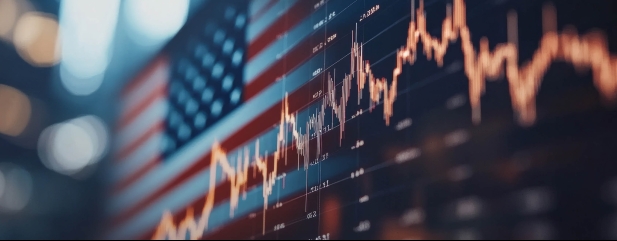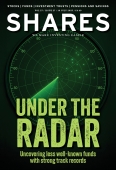Archived article
Please note that tax, investment, pension and ISA rules can change and the information and any views contained in this article may now be inaccurate.
Why big US bank stocks are on a roll again

Three months ago everyone was fretting over the impact of ‘Liberation Day’ tariffs on the US economy, the consumer, and the financial system.
The S&P 500 Banks index fell more than a quarter, and JPMorgan Chase (JPM:NYSE) chief executive Jamie Dimon was warning of long odds for a ‘soft landing’ for the US economy.
Fast-forward and the same index is powering to new highs, up more than 35% in the space of three months. So, what has changed to drive this performance?
As analysts at S&P Global Market Intelligence explain: ‘Heightened tariff-related anxiety will weigh on loan growth and credit quality, and could threaten earnings growth in 2025, but the worst-case fears in the investment community appear to have subsided and banks still expect to benefit from deregulation.’
And, while interest rates haven’t been cut as much as the market expected, funding costs are set to move lower which will help the banks increase their net interest margins, ‘while earning assets mature and are replaced with higher-yielding loans and securities,’ say the analysts.
Another factor driving performance has been the expectation of higher payouts in the form of dividends, after the Federal Reserve’s annual ‘stress test’ showed all 22 banks surveyed had enough capital to withstand a hypothetical economic downturn.
The stress test was softer than in previous years, as the Fed’s economic downturn scenario was less severe, resulting in theoretical loan losses of around $550 billion, but the market never lets the truth get in the way of a good story, and the fact the major lenders sailed through was a big win.
As a result, all the big Wall Street banks hiked their dividends for the coming quarter, with Goldman Sachs (GS:NYSE) raising its payout by 33% or $1 per share.
JPMorgan Chase nudged its payout up by 10c from $1.40 to $1.50 but made up for it with a new $50 billion share buyback, while Morgan Stanley (MS:NYSE) upped its payout from $0.925 to $1.00 and authorised a multi-year $20 billion buyback.
In terms of regulation, the Fed announced plans to lower the enhanced supplementary leverage ratio, which requires banks to hold a certain level of cash relative to their assets, which could prompt some banks to increase total shareholder returns further if they find they can’t deploy their excess capital.
The bank reporting season gets under way on 15 July with updates from Citigroup (C:NYSE), JPMorgan Chase and Wells Fargo (WFC:NYSE), among others.
Important information:
These articles are provided by Shares magazine which is published by AJ Bell Media, a part of AJ Bell. Shares is not written by AJ Bell.
Shares is provided for your general information and use and is not a personal recommendation to invest. It is not intended to be relied upon by you in making or not making any investment decisions. The investments referred to in these articles will not be suitable for all investors. If in doubt please seek appropriate independent financial advice.
Investors acting on the information in these articles do so at their own risk and AJ Bell Media and its staff do not accept liability for losses suffered by investors as a result of their investment decisions.
Issue contents
Editor's View
Feature
Great Ideas
Investment Trusts
News
- Currys shares climb to three-year high on resumption of dividends
- Scorching weather takes its toll on Hollywood Bowl
- Frasers Group targets Hugo Boss dividend policy and treasury shares
- Stock markets react with relief as tariff deadlines extended
- Musk risks alienating supporters with new political intervention
 magazine
magazine








